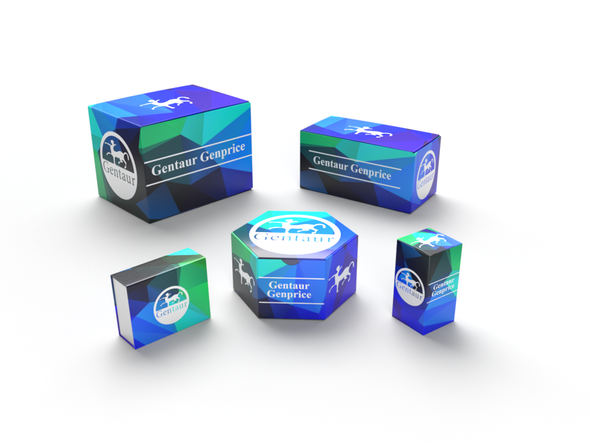Description
ABCA4 Antibody | 13-720 | Gentaur UK, US & Europe Distribution
Host: Rabbit
Reactivity: Human, Mouse, Rat
Homology: N/A
Immunogen: Recombinant fusion protein containing a sequence corresponding to amino acids 110-300 of human ABCA4 (NP_000341.2) .
Research Area: Neuroscience
Tested Application: WB, IF
Application: WB: 1:1000 - 1:2000
IF: 1:50 - 1:200
Specificiy: N/A
Positive Control 1: U-251MG
Positive Control 2: BT-474
Positive Control 3: 293T
Positive Control 4: Mouse heart
Positive Control 5: Mouse lung
Positive Control 6: Rat eye
Molecular Weight: Observed: 256kDa
Validation: N/A
Isoform: N/A
Purification: Affinity purification
Clonality: Polyclonal
Clone: N/A
Isotype: IgG
Conjugate: Unconjugated
Physical State: Liquid
Buffer: PBS with 0.02% sodium azide, 50% glycerol, pH7.3.
Concentration: N/A
Storage Condition: Store at -20˚C. Avoid freeze / thaw cycles.
Alternate Name: ABCA4, ATP-binding cassette, sub-family A (ABC1) , member 4, ABC10, ABCR, ARMD2, CORD3, DKFZp781N1972, FFM, RMP, RP19, STGD, STGD1, ATP binding cassette transporter, sub-family A member 4, ATP-binding transporter, retina-specific, ret
User Note: Optimal dilutions for each application to be determined by the researcher.
BACKGROUND: The membrane-associated protein encoded by this gene is a member of the superfamily of ATP-binding cassette (ABC) transporters. ABC proteins transport various molecules across extra- and intracellular membranes. ABC genes are divided into seven distinct subfamilies (ABC1, MDR/TAP, MRP, ALD, OABP, GCN20, White) . This protein is a member of the ABC1 subfamily. Members of the ABC1 subfamily comprise the only major ABC subfamily found exclusively in multicellular eukaryotes. This protein is a retina-specific ABC transporter with N-retinylidene-PE as a substrate. It is expressed exclusively in retina photoreceptor cells, indicating the gene product mediates transport of an essental molecule across the photoreceptor cell membrane. Mutations in this gene are found in patients diagnosed with Stargardt disease, a form of juvenile-onset macular degeneration. Mutations in this gene are also associated with retinitis pigmentosa-19, cone-rod dystrophy type 3, early-onset severe retinal dystrophy, fundus flavimaculatus, and macular degeneration age-related 2.






